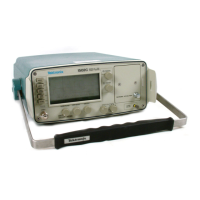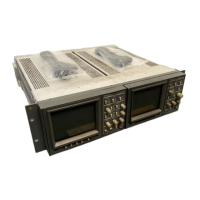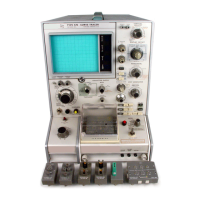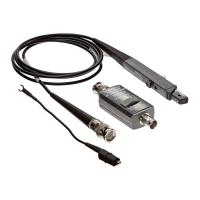Circuit Descriptions
1502C MTDR Service Manual
5–3
Referring to the waveforms in Figure 5–2, cable voltage waveforms are shown at
the top. Each step is from the pulse generator and all steps are identical. At time
delays (t
n
, t
n+1
, t
n+2
, etc.) after the steps begin, a sample of the step amplitude is
taken. Each of these samples is digitized and stored in the processor until sufficient
points are accumulated to define the entire period of interest. The samples are then
processed and displayed at a much slower rate, forming the recombined waveform
as shown. This process allows the presentation of waveforms too rapidly to be
viewed directly.
tn tn+1 tn+2
Cable
voltage
Voltage
samples
Recombined
samples
Figure 5–2: Waveform Accumulation Diagram
Voltage samples from the driver/sampler are combined with a vertical position
voltage derived from the front-panel control, then amplified. The amplifier gain is
programmed by the processor to give the selected vertical sensitivity. Each
amplified sample voltage is then digitized by an analog-to-digital converter and
stored in the processor memory.
When the processor has accumulated sufficient samples (251) to form the desired
waveform, the samples are formatted. This formatted data is then transferred to the
display memory. The display logic routes the data to each pixel of the LCD, where
each digital data bit determines whether or not a particular pixel is turned on or off.
Between each waveform, samples are taken at the cursor location for the “ohms at
cursor” function, and at the leading edge of the incident step for use by the timebase
correction circuit.
Cursor and readout display data is determined by the processor and combined with
the formatted sample waveform before it is sent to the display.
Artisan Technology Group - Quality Instrumentation ... Guaranteed | (888) 88-SOURCE | www.artisantg.com

